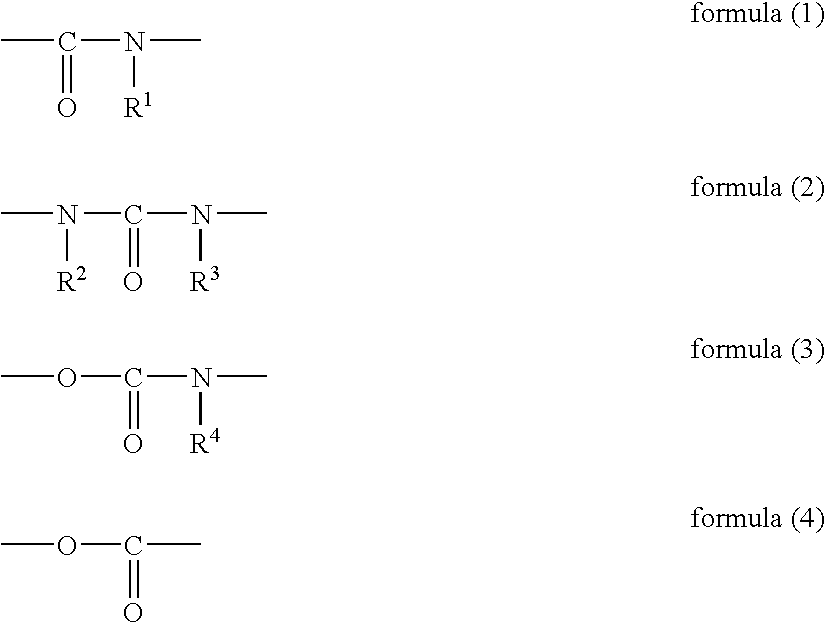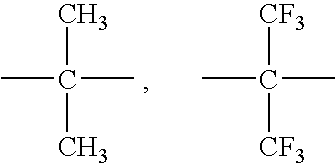Planographic printing plate precursor
a technology of planographic printing plate and precursor, which is applied in the direction of auxillary/base layers of photosensitive materials, instruments, photosensitive materials, etc., can solve the problems of low degree of sensitivity, insufficient highlight reproducibility, and diminished difference between an image region and a non-image region, so as to improve the reproducibility of highlights and reduce the number of images. , the effect of excellent film strength and excellent dissolution
- Summary
- Abstract
- Description
- Claims
- Application Information
AI Technical Summary
Benefits of technology
Problems solved by technology
Method used
Image
Examples
examples
Hereinafter, the present invention is described by reference to the Examples, but the invention is not limited to the Examples.
examples 1 to 6
[Preparation of a Support]
<Aluminum Plate>
An aluminum alloy containing 0.06% by mass Si, 0.30% by mass Fe, 0.025% by mass Cu, 0.001% by mass Mn, 0.001% by mass Mg, 0.001% by mass Zn and 0.03% by mass Ti, the balance being Al and inevitable impurities, was used to prepare a melt. The melt was then subjected to cleaning treatment, filtered and then formed by means of a DC casting method into an ingot of 500 mm in thickness and 1200 mm in width. After a surface layer of 10 mm in average thickness was shaved with a surface shaving machine, the ingot was kept at 550° C. for about 5 hours, and when the temperature was reduced to 400° C., the ingot was formed with a hot rolling mill into a rolled plate of 2.7 mm in thickness. Then, the plate was subjected to heat treatment at 500° C. with a continuous annealing device, finished with cold rolling to produce a plate of 0.24 mm in thickness, and an aluminum plate of JIS 1050 material was thus obtained.
The minor axis of the average cr...
examples 7 to 10
[Preparation of a Support]
The surface of an aluminum plate (material: JIS A1050) of 0.30 mm in thickness was subjected to etching treatment with caustic soda in a concentration of 30 g / l and aluminum ions in a concentration of 10 g / l at a solution temperature of 60° C. for 10 seconds, then washed with running water, neutralized with 10 g / l nitric acid and washed with water. The support was subjected to electrochemical surface roughening treatment with a sine-wave electric current of 500 C / dm2 in an alternating waveform at an applied voltage (Va) of 20 V in an aqueous solution containing hydrogen chloride in a concentration of 15 g / l and aluminum ions in a concentration of 10 g / l at a solution temperature of 30° C. After washing with water, the support was subjected to etching treatment with caustic soda in a concentration of 30 g / l and aluminum ions in a concentration of 10 g / l at a solution temperature of 40° C. for 10 seconds and then washed with running water.
Then, the suppor...
PUM
| Property | Measurement | Unit |
|---|---|---|
| concentration | aaaaa | aaaaa |
| alkali-soluble | aaaaa | aaaaa |
| acid | aaaaa | aaaaa |
Abstract
Description
Claims
Application Information
 Login to View More
Login to View More - R&D
- Intellectual Property
- Life Sciences
- Materials
- Tech Scout
- Unparalleled Data Quality
- Higher Quality Content
- 60% Fewer Hallucinations
Browse by: Latest US Patents, China's latest patents, Technical Efficacy Thesaurus, Application Domain, Technology Topic, Popular Technical Reports.
© 2025 PatSnap. All rights reserved.Legal|Privacy policy|Modern Slavery Act Transparency Statement|Sitemap|About US| Contact US: help@patsnap.com



